Thick, Rich Claypot Laksa With Baked Hokkaido Scallops By Millennial Hawker
The laksa recipe is from his ex-hawker mum while the scallops are inspired by his stint as a former Genki Sushi cook.
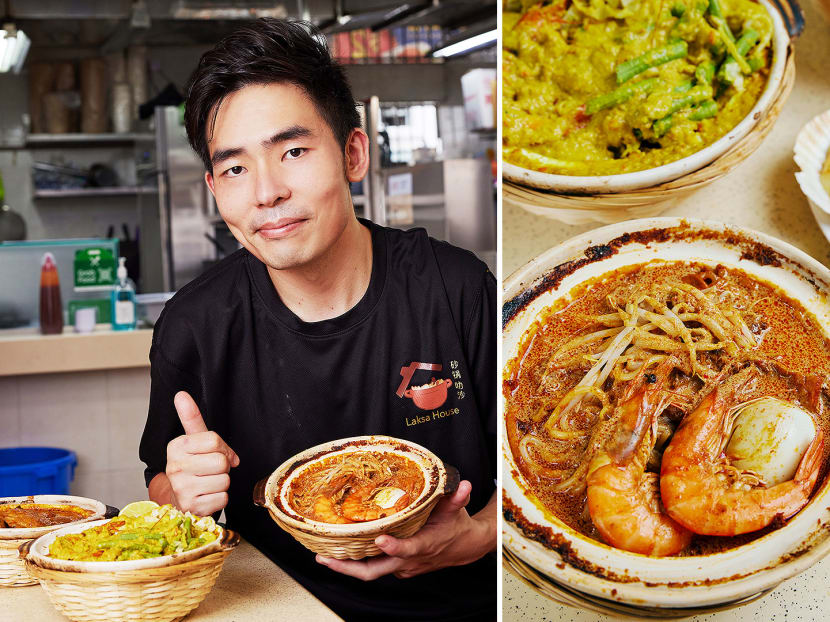
The laksa recipe is from his ex-hawker mum while the scallops are inspired by his stint as a former Genki Sushi cook.
“My ultimate goal is to create a chain selling all kinds of laksa,” declares Jacob Sim, 31, close to the end of our interview at the Bukit Merah coffeeshop that houses his new stall, Laksa House. “I’m hoping to open a second outlet next year.”
These are big dreams for a hawker so newly minted (the stall opened on Oct 15), congratulatory flower stands still lean against the wall next to our table.
But maybe Jacob, the former boss of a logistics firm and the son of a hawker stall cook, has the business chops and background to make it work. For now, Laksa House offers patrons just two varieties of the noodle: tasty Singapore-style laksa, and the rarer Thai laksa, both served piping hot in claypots.
All photos cannot be reproduced without permission from 8days.sg
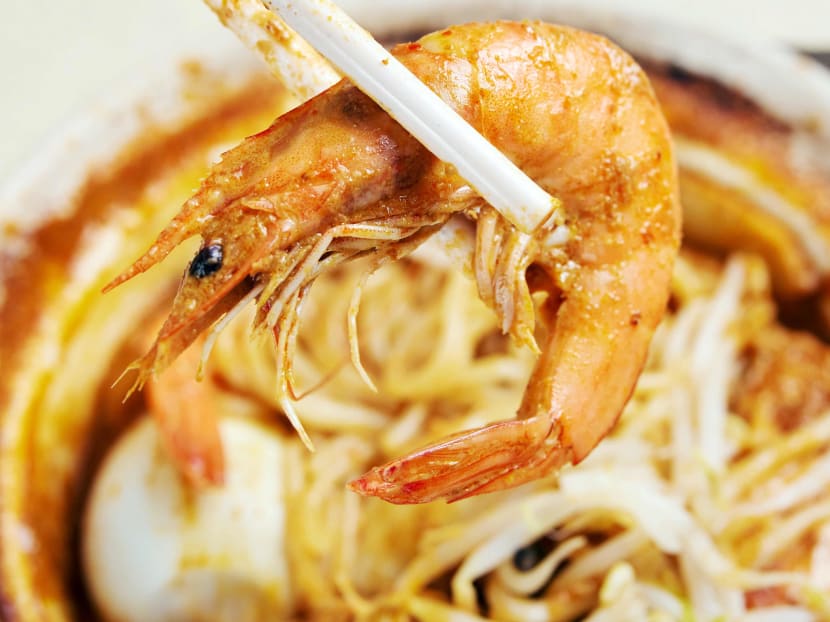
“I love spicy food like laksa – especially Depot Road Zhen Shan Mei Claypot Laksa – and curry chicken,” Jacob says. Lo and behold, both items are on the menu.
For his standard laksa offering, Jacob took three months to perfect a recipe inherited from his mum Mdm See, 56, a former assistant cook at several laksa hawker stalls (which he declines to name), to get a broth that’s “thick, creamy and not too spicy”. Mdm See also used to cook laksa under the Fei Siong Group, which owns F&B chains like Eat!, Malaysia Boleh And Encik Tan.
As for the Thai laksa, it’s a recipe Jacob came up with after watching YouTube videos and cooking shows. His varied career path includes a brief stint as a cook at Japanese chain Genki Sushi in 2017, and another as the manager of now-defunct Japanese soba joint Nadai Fujisoba NI-HACHI in 2019.
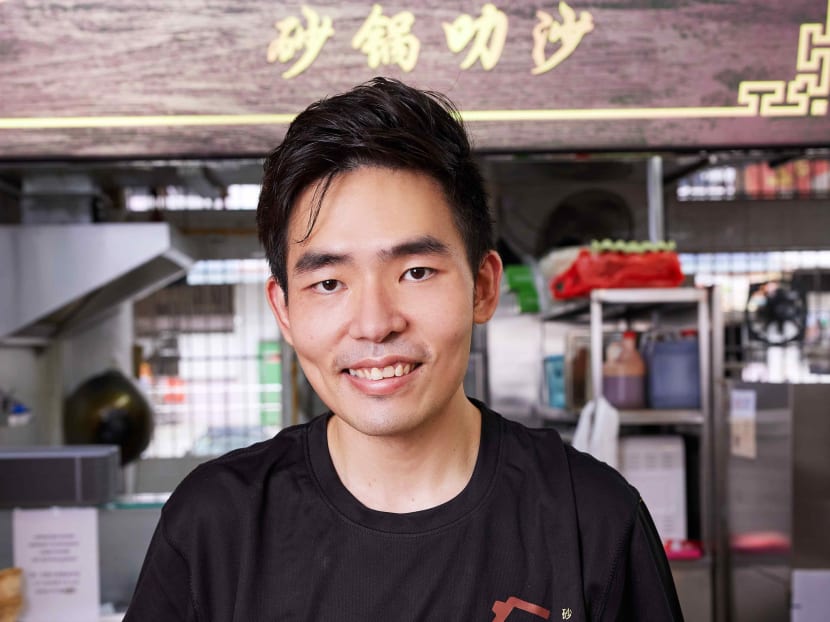
Jacob’s last job was the owner of a logistics company employing 30 drivers to do contracted deliveries. Started in 2019, he sold the biz off in April 2021 to one of his clients for a tidy sum enough to cover the roughly S$20,000 needed to set up his hawker stall. He has a four-year-old son and a two-month-old baby girl.
“I felt it was the right time [to sell the biz],” he says. “For over five years I wanted to go into F&B, and having built a successful business, I felt that I was finally ready.” He previously tried his hand at a few other businesses involving printing, IT, a photography studio, and imported snacks, none of which quite took off.
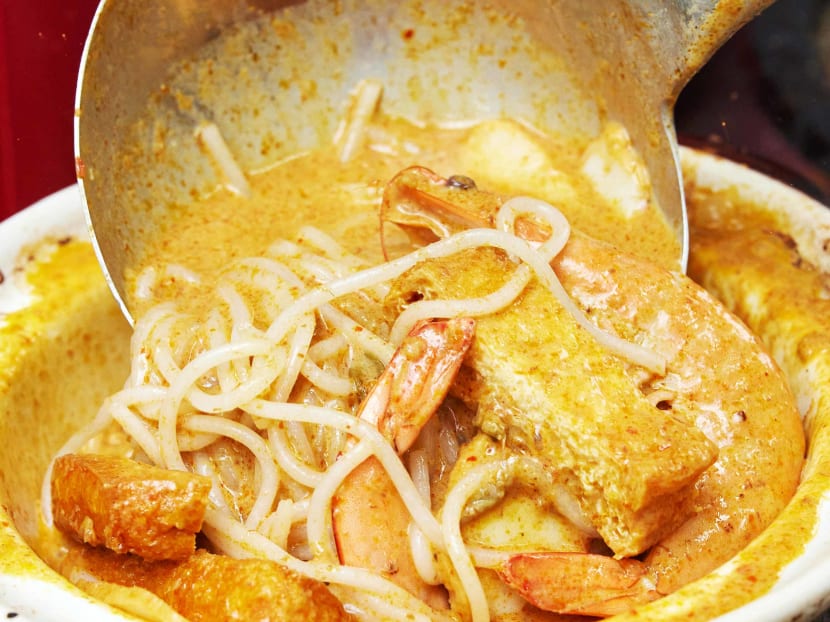
Laksa House is nestled in the coffeeshop opposite Bukit Merah Central Food Centre, and counts Japanese BBQ hawker chain Yakiniku Warrior among its fellows. On weekdays, business comes mainly from office workers in the vicinity, while the weekends sees families from neighbouring HDB estates.
Jacob sells about 60 bowls a day, and like many other hawkers amid the pandemic, is trying to increase demand through group buys and bulk orders.
Because of his claypot serving method, the food at Laksa House comes bubbling hot – resulting in high demand on rainy days, Jacob says. He prepares the laksa components at the start of the day, then assembles and heats them up in individual claypots upon order. This second boil reduces the broth to a concentrated consistency.
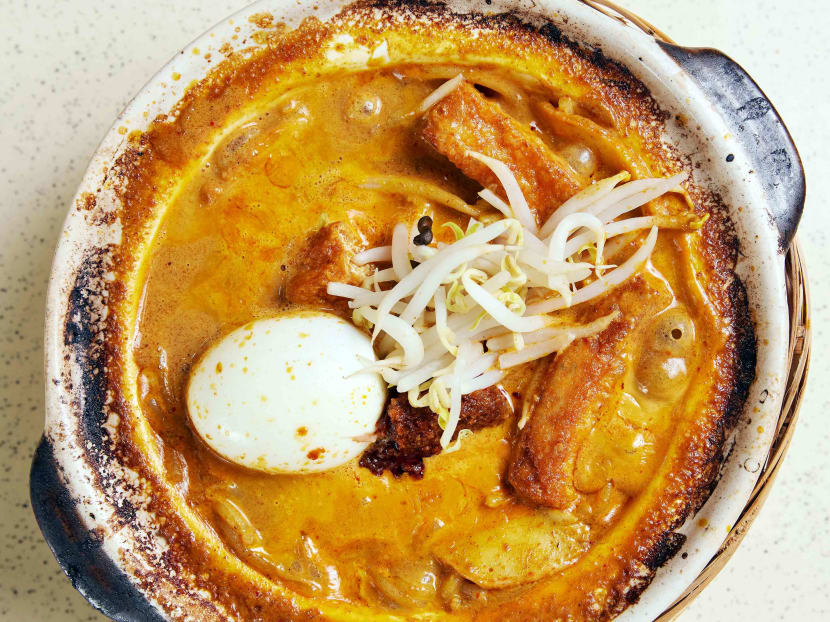
This is a respectable rendition: unabashedly rich and lemak, with an assertive but tolerable spiciness kicking in towards the end. The claypot makes the steaming noodles look extra appetising – we can see why regulars seek this out as comfort food in wet weather. Unfortunately, the heated claypot also causes most of the liquid to evaporate within 10 minutes, leaving behind an overly thick laksa sauce that quickly tastes jelak. Atop the noodles are two medium-sized fresh prawns, beansprouts, tau pok, a whole hard boiled egg, and a token bit of cockles and fish cake slices.
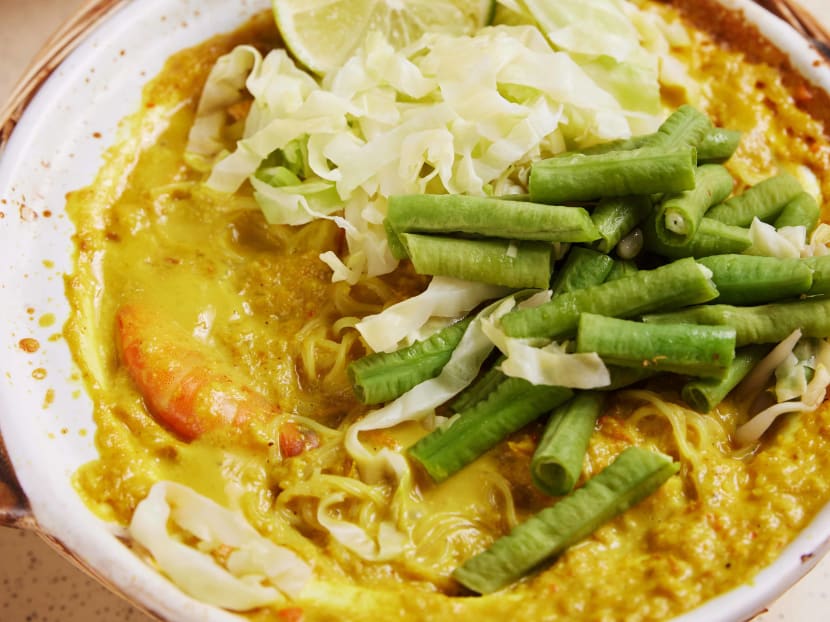
Only about one in 10 customers orders the Thai laksa because people aren’t familiar with it, Jacob says. Which is a pity, because it’s worth a taste. Thai laksa is popular in the south of Thailand, and apparently shares influences with Penang’s Siamese laksa (also known as laksa lemak), which tastes like a creamy, less tangy assam laksa.
This particular Thai laksa dish is Jacob’s own invention, a mashup of recipes he’s found both on and offline. It’s made by blending and frying 11 herbs – including shallots, garlic, ginger, turmeric, candlenut, lemongrass, and basil to make a paste that’s infused with coconut milk into a fish-based broth, similar to how laksa lemak is made.
The sauce, with a rather unusual yellow-green hue compared to the typical orange broth, has distinct sour notes, while the combination of herbs and spices ends up creating a flavour, colour and texture closer to Thai green curry than laksa. Nevertheless, the herby gravy and vegetable toppings – cabbage and long beans, plus two prawns and a bit of fishcake – make for a light dish that’s still satisfyingly lemak, with the sour notes balancing out the richness. The choice of thin bee hoon is unusual, but works well to soak up the thick gravy.
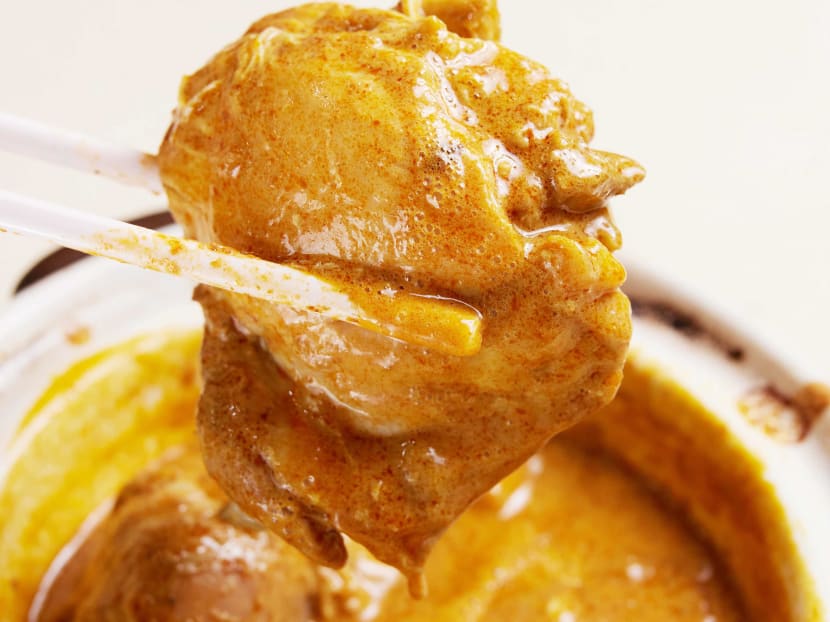
Like the laksa, the curry is rich and lemak, though thankfully not as overwhelmingly thick. Jacob confesses the curry is there just to beef up the menu, but it’s turned out to be a bestseller. He cooks the curry, chicken and potatoes separately before boiling them together in a claypot just before serving. The two decently large chicken drumsticks boast tender meat, and the potatoes – first boiled, then deep fried – retain their shape well. The set comes with fried mantou.
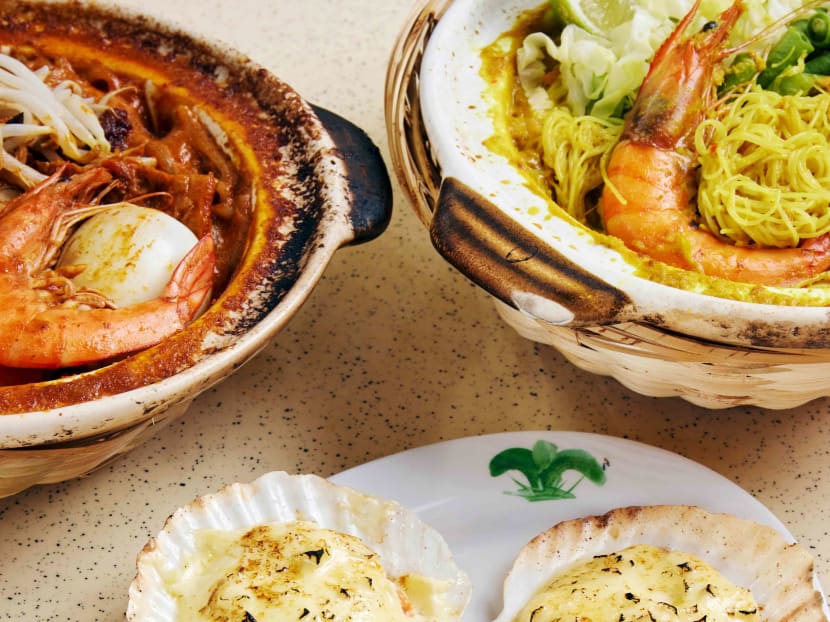
From Jacob’s stint at Genki Sushi comes this unusual side dish for a laksa joint, featuring three medium-sized half shell Hokkaido scallops that are first boiled, then coated in a cream sauce, baked, and finally torched till smoky. “It’s a lot of work. I'm wondering whether to increase the price,” he jokes.
The scallops are a decent size for the price, and heavenly paired with the sauce, which tastes of Japanese mayo and cream cheese. Jacob is tight-lipped about the ingredients used, but insists there’s no cheese. He’s also included raw garlic for texture, but the bits in the middle and bottom that the blowtorch can’t reach remain bitter and astringent.
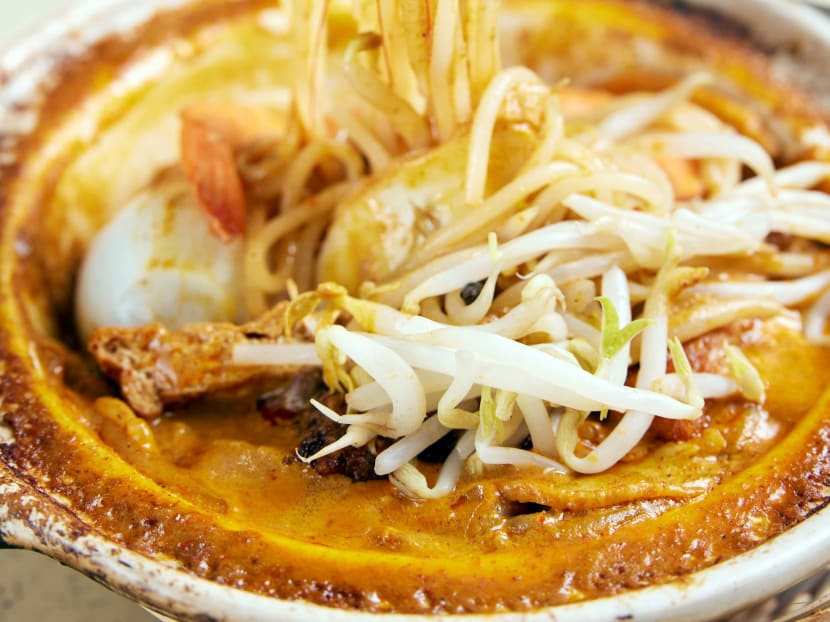
The regular laksa and Thai laksa are as different as night and day: the former is richer, while the latter is more sour, though both are nice and coconutty and equally worth trying. We only wish the gravy could be a bit more soupy, so both dishes can maintain their texture after being cooked down in the heated claypots. The creamy, tasty baked Japanese scallops are an unusual but welcome side dish, though we'd prefer less raw garlic in it.







